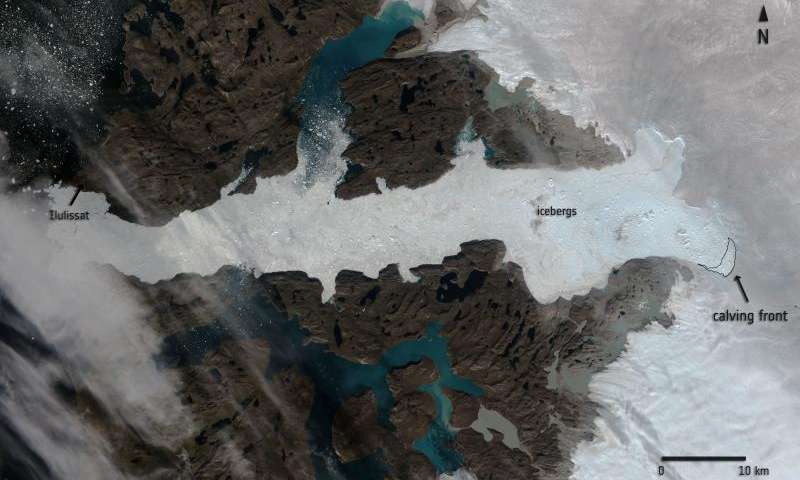Scientists have reported the break of a huge part of Jakobshavn Glacier, one of the largest ones in Greenland. A chunk of it roughly the size of Manhattan broke some time between August 13 and August 19.

Jakobshavn Glacier drains 6.5% of the Greenland ice sheet and produces around 10% of all Greenland icebergs. Some 35 billion tonnes of icebergs calve off and pass out of the fjord every year. Icebergs breaking from the glacier are often so large (up to a kilometer in height) that they are too tall to float down the fjord and lie stuck on the bottom of its shallower areas, sometimes for years.
So calves, even big ones, are not uncommon at Jakobshavn, but this one might be the biggest calve on record. Comparing the images seen from outer space, it looks like the new face of the glacier has been pushed inland by several kilometers, the most inland position since monitoring began in 1880.
It is estimated that the glacier lost a total area of 12.5 sq km. Assuming the ice is about 1400 m deep, this equates a volume of 17.5 cubic km, which would be enough to cover the entire Manhattan under a 300 meter thick layer.
But not everybody is convinced of the scale of the calve:
“Overall, I don’t think that they really can nail the ‘largest’ [calving event] or not,” wrote Richard Alley, a glaciologist at Pennsylvania State University, in an email to The Washington Post. “I wouldn’t get too excited on this, even though it is not good news.”
The calving and melting of glaciers is not good news at all: Greenland is one of the main contributors to rising sea levels, and all that melting ice goes into the global waters. Jakobshavn is a key part of that dynamic. Ian Joughin, a glaciologist at the University of Washington’s Polar Science Center told The Christian Science Monitor that Jakobshavn Glacier is actually a fast current of ice within this ice sheet.
“We are now seeing summer speeds more than four times what they were in the 1990s, on a glacier which at that time was believed to be one of the fastest, if not the fastest, glacier in Greenland,” said Dr. Joughin.


